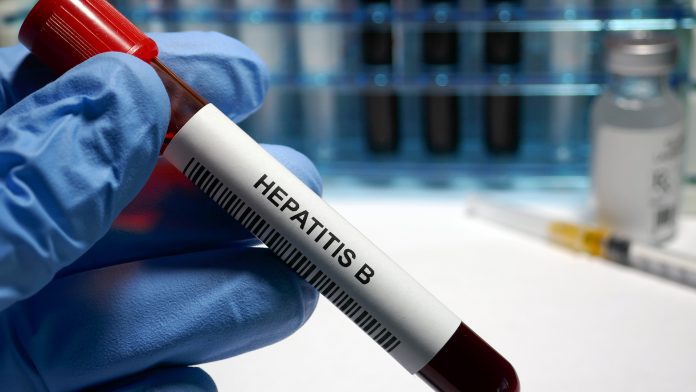
A team of researchers from the University of Geneva have identified a key protein complex that could open the door to a new hepatitis B treatment.
Hepatitis B is a serious and common infectious viral disease. The disease attacks cells in the liver causing transitory inflammation in the organ. The disease can be transmitted through biological fluids and is commonly spread through blood and sexual transmission. Chronic hepatitis B can lead to serious complications such as cirrhosis and liver cancer. There is currently no effective hepatitis B treatment for the chronic form of the disease, this can only be prevented by vaccination.
Hepatitis B is the most common form of hepatitis and is 100 times more contagious than HIV. An estimated one million people die from the disease each year, highlighting the urgent need for an effective hepatitis B treatment.
The new discovery from the University of Geneva (UNIGE) means researchers now understand the precise function of the key protein protective mechanism, allowing the possibility to develop a hepatitis B treatment.
The results of the research have been published in the journal Nature Structural and Molecular Biology.
Building on previous research
In 2016, a research team led by Michel Strubin, an associate professor in the Department of Microbiology and Molecular Medicine at UNIGE, discovered a mechanism that is vital for understanding hepatitis B. When the body defends itself against SMC5/6, a complex set of six proteins, cells can detect and block the viral DNA. The virus reacts by producing a specific protein, known as the X protein. This protein enters the cell and degrades the SMC5/6, causing it to deactivate.
The antiviral function of SMC5/6 was unknown prior to the researcher’s discovery. In a more recent study, the UNIGE team worked alongside researchers from the American pharmaceutical company Gilead Sciences to identify the three-step process and specific proteins required for SMC5/6 to successfully play its antiviral role.
‘‘In the first step, a protein of the SMC5/6 complex detects the virus’ DNA and traps it’’, said Fabien Abdul, a senior research and teaching assistant in the Department of Microbiology and Molecular Medicine at the UNIGE Faculty of Medicine and first author of the study.
‘‘Then, a second protein of the complex – SLF2 – takes the trapped DNA of the virus into a sub-compartment of the nucleus of the attacked cell, called the PML body. A third protein – Nse2 – then comes into play and inhibits the virus’ chromosome.’’
“As SMC is a large family of protein complexes, the researchers also wanted to know whether other ‘members’ of this family were able to bind to hepatitis B viral DNA. We discovered that this competence was unique to SMC5/6,” he explained.
The researchers achieved these results by examining in vitro cell cultures. ‘‘We used molecular biology techniques and more specifically genetic scissors called CRISPR-Cas9. This tool allowed us to cut the DNA strands within the cells and thus delete or modify the gene coding for each protein constituting the SMC5/6 complex. Thanks to this technique, we were able to make one or other of the proteins disappear and thus understand their respective functions within the complex,’’ explained Strubin.
Development of hepatitis B treatment to begin soon
These findings have provided the researchers with a better understanding of the complex antiviral functions of SMC5/6. The research team are hopeful this could lead to the development of an effective hepatitis B treatment.
Before developing the hepatitis B treatment, the researchers will have to work on understanding the X protein. UNIGE researchers have highlighted the importance of understanding the counter-attack mechanism used by the hepatitis B virus against the antiviral activity of the SMC5/6.
‘‘The next stage of research will consist of better deciphering the mechanism of inhibition of the virus in the sub-compartment of the cell nucleus,” said Aurélie Diman, a postdoctoral researcher in Strubin’s laboratory.










